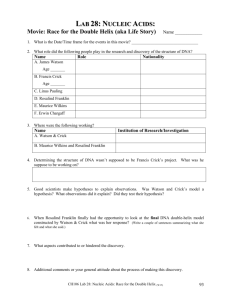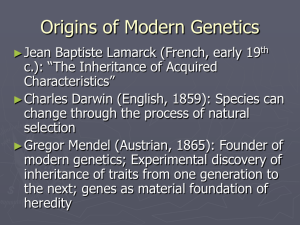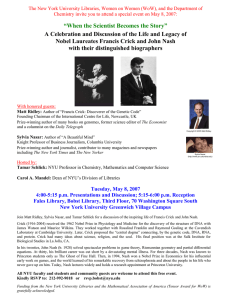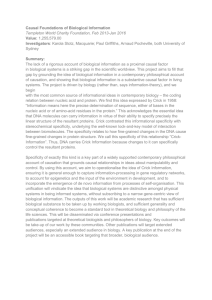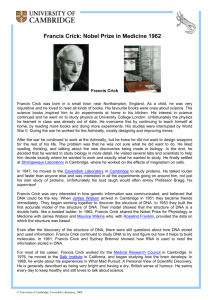11 January 2016 Dear colleague, 2016 Francis Crick Institute Attachments
advertisement
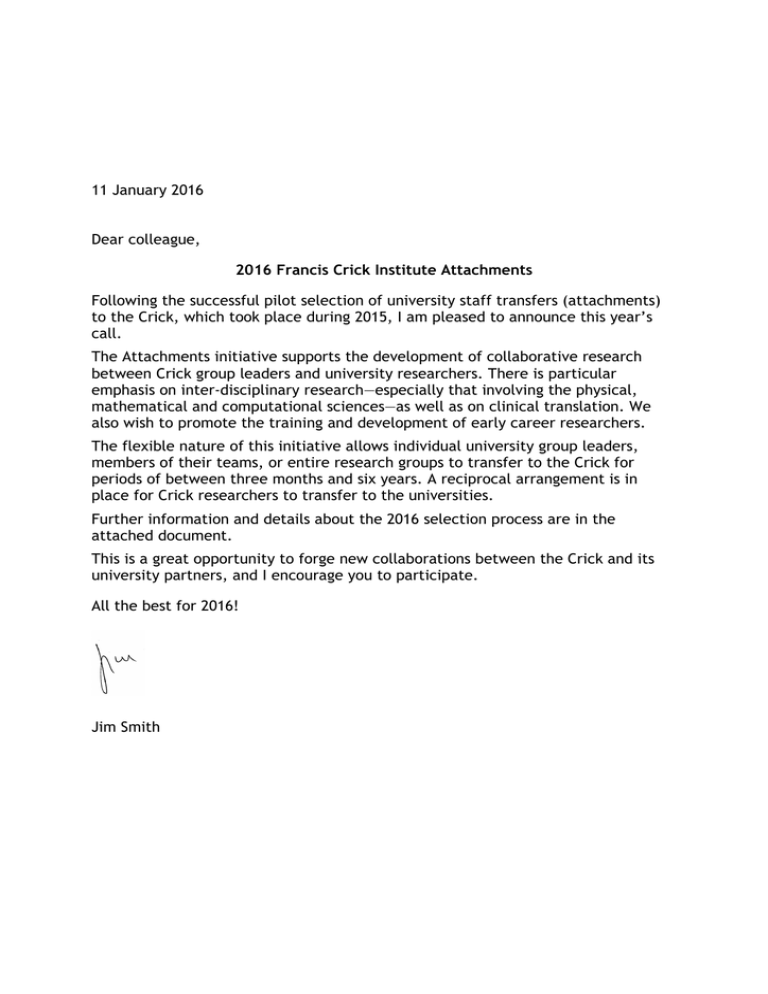
11 January 2016 Dear colleague, 2016 Francis Crick Institute Attachments Following the successful pilot selection of university staff transfers (attachments) to the Crick, which took place during 2015, I am pleased to announce this year’s call. The Attachments initiative supports the development of collaborative research between Crick group leaders and university researchers. There is particular emphasis on inter-disciplinary research—especially that involving the physical, mathematical and computational sciences—as well as on clinical translation. We also wish to promote the training and development of early career researchers. The flexible nature of this initiative allows individual university group leaders, members of their teams, or entire research groups to transfer to the Crick for periods of between three months and six years. A reciprocal arrangement is in place for Crick researchers to transfer to the universities. Further information and details about the 2016 selection process are in the attached document. This is a great opportunity to forge new collaborations between the Crick and its university partners, and I encourage you to participate. All the best for 2016! Jim Smith Call for exchange of researchers between the Crick and its University Partners Introduction One important way to help fulfil the Crick’s Discovery without Boundaries strategy is to bring together researchers from the Crick laboratory and its partner universities to undertake new inter-disciplinary collaborations. To help achieve this, university staff from twenty research groups selected through a pilot selection round will move into the Crick as secondments, satellite groups or sabbaticals during 2016. Secondments: A group leader (often in the early stages of their career) and her or his entire laboratory transfer to the Crick for three to six years. Satellite groups: Groups of one to three researchers from a university group transfer to the Crick for an agreed period (usually between three months and three years). Sabbaticals: A university group leader spends up to a year working in a Crick research group, typically learning new techniques or undertaking hands-on research. The pilot selection focussed on university researchers moving to work in the Crick. The second round will introduce reciprocal arrangements in which Crick researchers might move, as Secondees, Satellites or Sabbatical workers, to university laboratories. Applications will be assessed on the quality of the proposed research and its interdisciplinary nature, with a particular focus in the physical, mathematical and computational sciences, and in clinical translation. Consistent with the Crick’s aim to create future science leaders, applications involving early career researchers are particularly encouraged. Useful information Applications are welcome from all university principal investigators following discussion with the appropriate Dean, and from all Crick group leaders after discussion with Jim Smith and, where appropriate, other members of the Research Directorate. For Crick group leaders, the duration of the attachment should not exceed the GL’s tenure. University principal investigators moving to the Crick will remain as university employees, and Crick group leaders will remain as employees of the Crick. Attachments are expected to be externally funded. Should core-funded Crick researchers move to a university laboratory as part of an attachment arrangement, their equipment and consumable costs will not be covered by core funds, and their positions will not be back-filled. Secondments are intended to provide a training and development opportunity for early career researchers who can benefit from the research environment and support available at the Crick or in the university laboratory. Seconded research groups are also expected to add value to the host institution. Applications for satellites and sabbaticals should be based on discussions with the collaborating group leader, and should include a short supporting statement from the collaborator. Applications from the Crick should be supported by Jim Smith and the Research Directorate, and applications from the university should be supported by the relevant Dean or equivalent. Applications will first be assessed internally by the appropriate university or the Crick, with selected projects then being considered by a panel including representatives from the Crick and the university partners. Key dates: Applications submitted to home institution Universities send selected applications to the Crick and the Crick sends selected applications to the universities Applicants notified whether or not they have been shortlisted for interview Crick/University selection panels Notification of outcome 11th March 2016 18th April 2016 Mid-May 2016 13th June 2016 22nd June 2016 24th June 2016 (am only) Early July 2016
